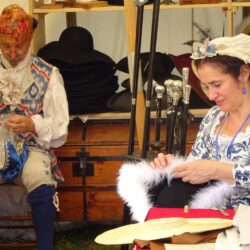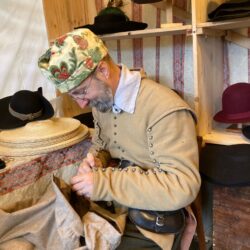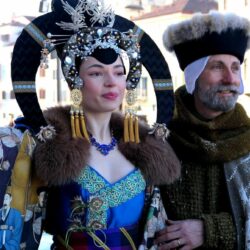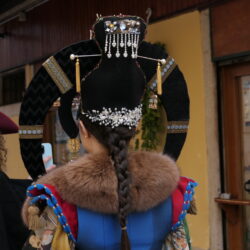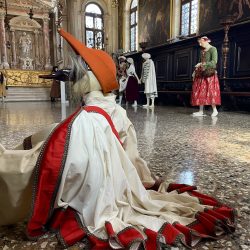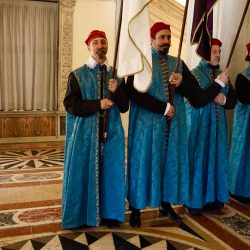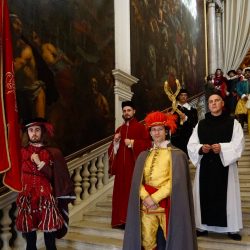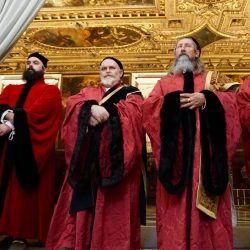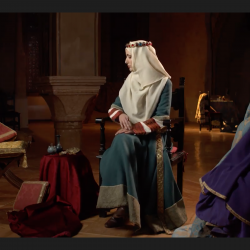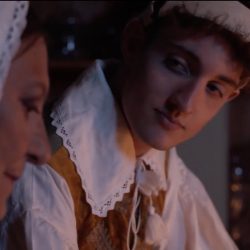
Atelier Pietro Longhi next appointments
Thirty years of experience, to create the best artisanal works for historical re-enactment. Hats, socks, caps, militaria, costumes. Everything that a re-enactor of any era could desire can be achieved by Francesco and Anna.
In August you will find us again in Fulda, the ancient city in the center of Germany, which has always been a place of border and exchange. With its baroque castle, designed in the first half of the 18th century by an Italian architect, thanks to the annual fair the relationship between Italian excellence and German land is renewed in the stand of the Atelier Pietro Longhi.
On August 10th and 11th, come and visit us and for re-enactors we will bring many products that can otherwise only be purchased on our website!
Info: https://www.hessen-militaer.de/zeitreise-information.html
This year there will be one of the most anticipated biennial events in all of Germany, the Venetian fair in Ludwigsburg, we couldn’t miss it after having exported Anna’s hats and accessories made by Francesco in the baroque heart of the city for twenty years. Germany! From 6 to 8 September:
info: https://visit.ludwigsburg.de/start/events/venezianische+messe+ludwigsburg.html
The last event of the season, the Usi & Costumi fair, dedicated to Italian re-enactors, returns to its headquarters in Ferrara, showing the beauty of Italian culture, history and craftsmanship to lovers of historical reconstruction.
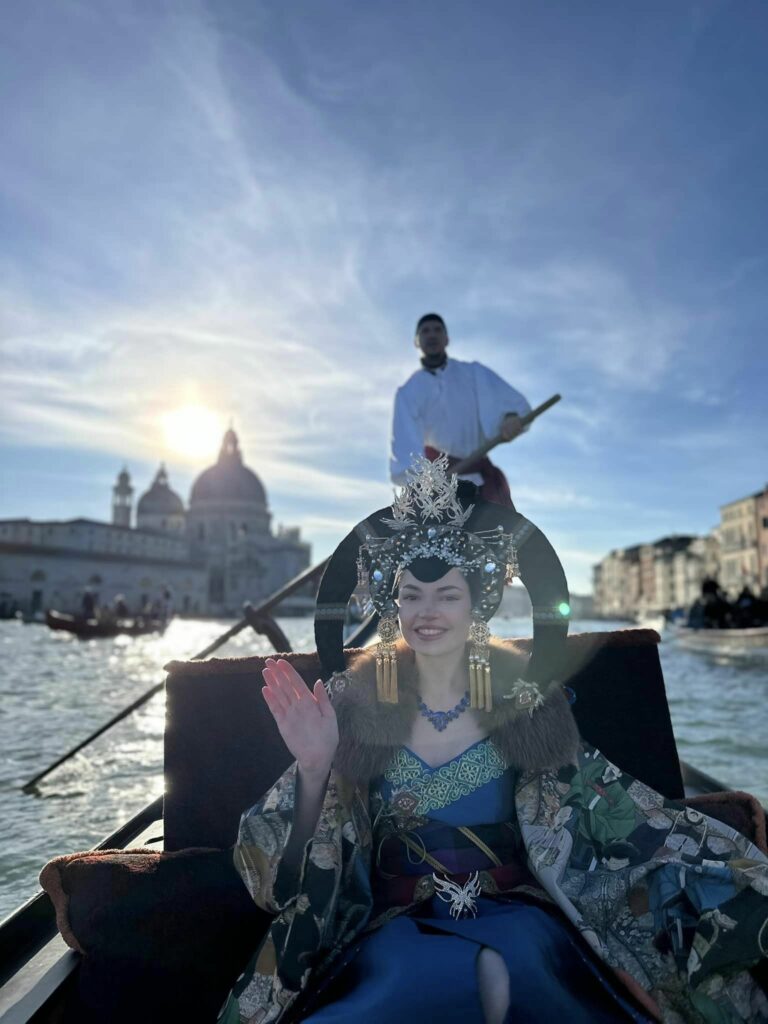
“Maria dell’anno 2024”, a tribute to Marco Polo’s long journey to the Far East
700 years ago the greatest of European travelers left us a text that told of distant peoples and cultures, of different uses and unknown technologies: silk, porcelain, paper, perfumes… in his Livre de marvels du monde written in a new language, the international Venetian Franco spoken by all merchants, Marco Polo describes sophisticated populations, with large and rich palaces, precise ceremonials, and the most avant-garde material culture of the era.
Francesco Briggi, inspired by this great explorer, created a one-of-a-kind dress. To describe the cultures that the most famous Venetian in history encountered, he studied the characteristic clothing of different populations, and then built a dress that spoke of exchanges, union, sharing.
“The oriental princess” wonderfully worn by Mary of the Year Silvia Zecchin, is a continuous reference to Tibetan, Mongolian and Chinese culture, and each element is characterized by pieces from different cultures.
The hairstyle characterized by the shape of large inverted ox horns, refers to the myth of the winged princess world’s protector, who is Princess Khutulum, who was actually met by Marco Polo and inspired the Western fairy tale of Turandot. The vertical part that stands out behind the same hairstyle is instead characteristic of Tibet, while the butterflies that play as the lady moves, the small golden lanterns, the pins, are a precise reference to Chinese culture.
The belt, the fur collar, the double-breasted closure crossed at shoulder height, are typical details of the Mongolian culture which fought the harsh climate with layers and skins, influencing both Tibetan fashion, which remained simpler in its result, and that Russian, which still retains the closure in the typical traditional uniforms.
The fabric could only be silk in different processes, from shantung to lampas with Chinese lion motifs, while the trimmings that border the entire dress were made entirely by hand in India, thus paying homage to the long silk road.
A characterizing element beyond the hairstyle are the large and rich kimono sleeves, made of printed cotton, which recall the paintings of the “Chinese ancestors”, a classic motif of Chinese culture. In this case we recognize the Emperor with his court.
Cultures, centuries of fashion and thoughts met in the hands and scissors of Francesco Briggi who thus created a hymn to peace and union dressing the hopes of a young Maria ready to pass on the traditions, desires and dreams of a young Venetian!
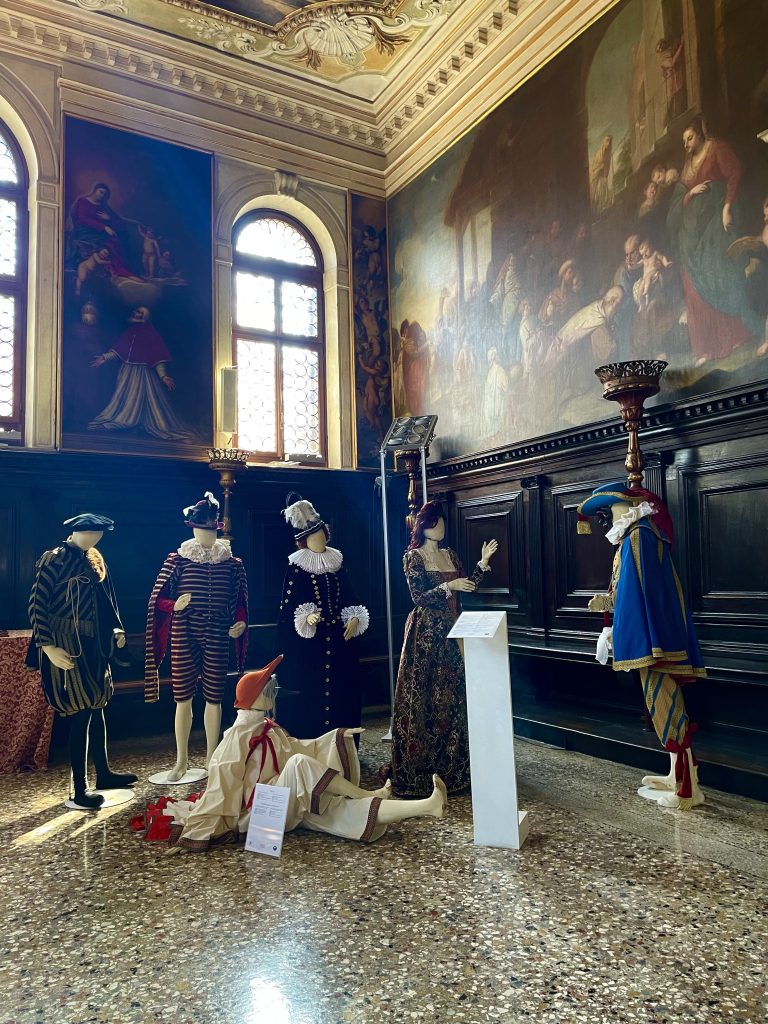
Exhibition “Fashion’s tales – Carnival in Venice”
Exhibition of historical costumes by Atelier Pietro Longhi, made by Francesco Briggi and curated by Raffaele Dessì
Info and reservations on www.pietrolonghi.com
The exhibition “Fashion Stories” will show for the first time all the social classes that lived in the Serenissima, thanks to cross-sections of the carnivals over the centuries. The propensity of the Scuola Grande to welcome representatives of all social classes, with a large presence of women, a very rare reality in the past, inspired the birth of an exhibition that was not limited in its description only to the high classes, usually in the center of the studies given the quantity of documents and the speed with which the shapes of the clothes changed.
The prestigious venue, unique in its kind and preciousness, the summa of Venetian Baroque architecture and art opens its doors to Francesco Briggi tailor of the Atelier Pietro Longhi, who made all the clothes with their accessories, and to Dr. Raffaele Dessì who oversaw the entire exhibition in terms of contents and set-up, allowing the creation of the exhibition “Fashion Stories – Carnival tales”. This exhibition tells the story of Venice through one of the most important characteristics of its material culture: clothing and the materials connected to it.
In 20 costumes, faithfully reproduced by Francesco Briggi from original documents or taken from paintings by the most important Venetian painters, it is shown how much trade first and then manufacturing art, linked to fashion, were the fundamental engine for the development and affirmation of the Venetian myth from the Middle Ages to the mid-1700s, up to the present day with excellences that are exported from the lagoon all over the world.
Three periods were examined: the early Renaissance, with the representatives of the “compagnie di calza” (stocking companies), followed by a section of the early 1600s, ending with a section dedicated to the famous Venetian Carnival of 1700, the engine of the rebirth in the ‘ 80 of the last century.
A selection of costumes that represent almost four hundred years of Venetian traditions, tales and stories, to be enjoyed together with the beauty of the Scuola Grande dei Carmini.
For info and reservations call 328 9706572 or write an email to pietrolonghi@pietrolonghi.com

Lepanto 1571 – 2021
Lepanto 450
Promoted by ” Rialto mio”, with the patronage of the Veneto Region, on Saturday 16 October 2021, was commemorated the arrival of Sebastiano Venier in Venice after the victory in the naval battle of Lepanto.
History has given numerous readings to this event. So we decided to recall a moment of history, to stimulate discussion and reflection on the Venetian naval capacity and on the importance of the ports of the Serenissima in the Mediterranean Sea after the discovery of the Americas.
The celebration was divided into three main moments: a conference held in Vicenza, where various scientist illustrated the scenographic machines created to celebrate the winner and the victory, followed by the triumphal arches in marble (still present in Vicenza) and the numerous paintings celebratory that still embellish salons throughout Europe. This was followed by a meeting where the mayor of the city of Messina (the first port that welcomed and sheltered the ships of the Holy League) and the representative of the city of Lepanto talked about their relationship with the memory of the battle, which took place. concluded with a great historical reenactment.
Sixty costumes made in a philological way by Francesco Briggi, following the descriptions of Grevembroch, Pagan and Vecellio, were worn by as many reenactors, each with its own role. In this way, for the first time more than 200 years after the fall of the Republic of Venice under the artistic direction of Dr. Dessì, directed by dr. Giusto, the ducal procession of the Serenissima has come back to life in its late 1500s form, the golden age of the Venetian Renaissance.
In the halls of the Scuola Grande di San Rocco, in Castelforte San Rocco and finally at the Basilica dei Frari to end in the Scuola Grande San Giovanni Evangelista, the procession of the Doge and that of the Dogaressa have developed paths and positions as the rigid ceremonial of Venice would have required. Renaissance, offering the public and scholar a stimulus for deep study about Venetian culture.

Venicessence
There is no better way to celebrate Venice’s birthday than to remember the great innovations and projects that were born in the lagoon.
We provided the costumes for some videos shot for Bottega Cini and The Merchant of Venice about the great Venetian perfumers.
The history of perfume and spices in Europe is inextricably linked to Venice, and as often happened in the city, women were protagonists and entrepreneurs who developed projects whose repercussions we can see till today. The first protagonist is Maria Agyros, granddaughter of the emperor of the Eastern Roman Empire and then a Byzantine princess, who brought the use of perfume to Venice. The second Isabella Cortese, the first who took care to create real beauty creams and perfumes, mother of modern cosmetics, and finally Caterina Gennari, who, distilling grappa in the city, gave her nephew the idea to make the first cologne , ancestor of all modern perfumes.
Three short videos, with texts edited and read by Pieralvise Zorzi, directed by Tommaso Giusto for Veneta Video, with costumes and accessories made by Francesco Briggi.
https://www.facebook.com/bottegacini/videos/489602952176838
https://www.facebook.com/bottegacini/videos/805356040107571
https://www.facebook.com/bottegacini/videos/961280988035738



